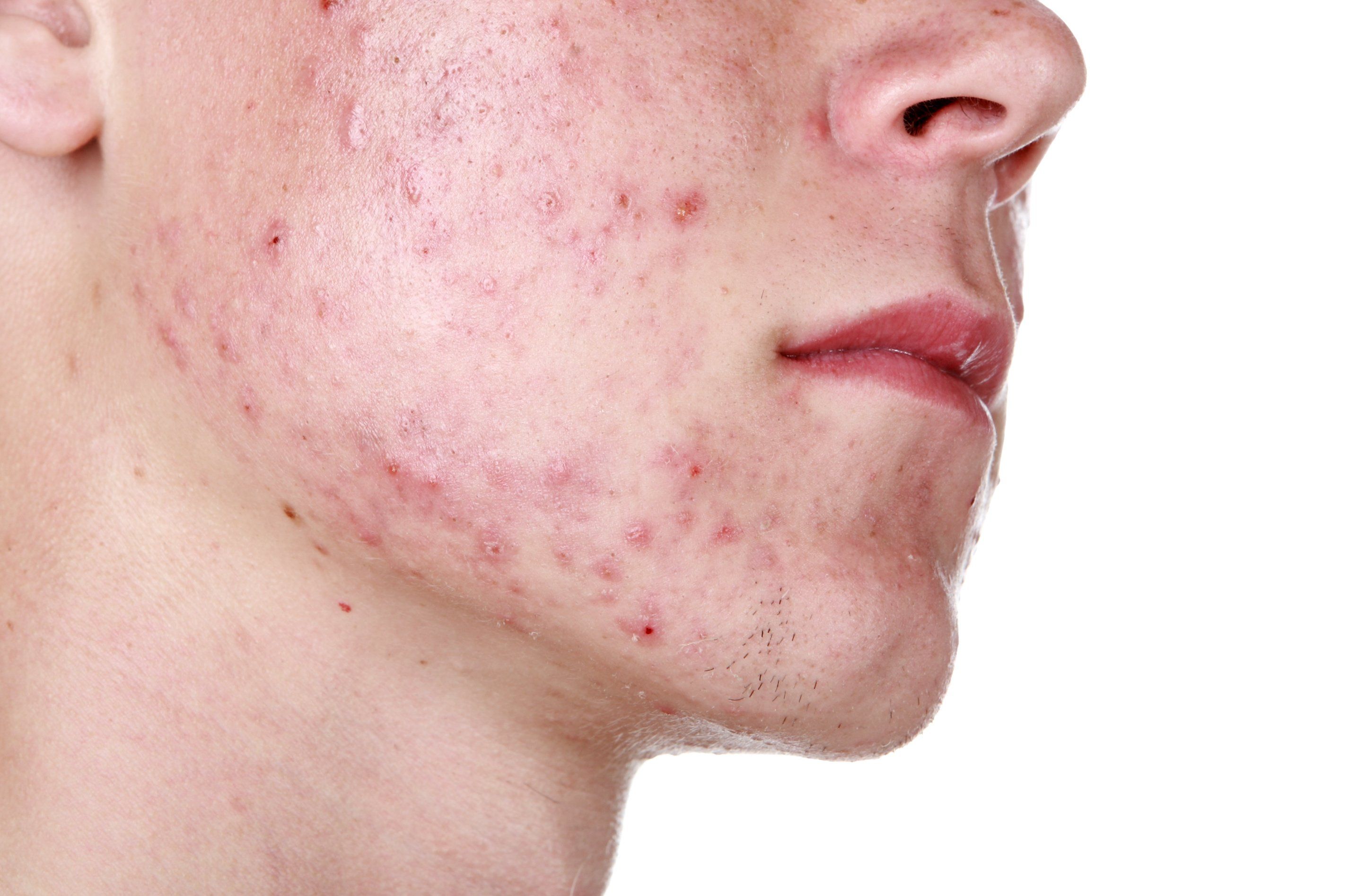- Acne
- Actinic Keratosis
- Aesthetics
- Alopecia
- Atopic Dermatitis
- Buy-and-Bill
- COVID-19
- Case-Based Roundtable
- Chronic Hand Eczema
- Chronic Spontaneous Urticaria
- Drug Watch
- Eczema
- General Dermatology
- Hidradenitis Suppurativa
- Melasma
- NP and PA
- Pediatric Dermatology
- Pigmentary Disorders
- Practice Management
- Precision Medicine and Biologics
- Prurigo Nodularis
- Psoriasis
- Psoriatic Arthritis
- Rare Disease
- Rosacea
- Skin Cancer
- Vitiligo
- Wound Care
Article
Novel topical and oral drugs stir excitement
Author(s):
Key developments among new and emerging treatments for acne and rosacea include a novel oral agent and a novel topical agent, as well as new formulations of existing products, says Diane S. Berson, M.D. in her presentation at AAD.
"Eating a low glycemic diet might lower androgen bioavailability and improve acne. I believe we will see more research on the role of diet in the future," says Diane S. Berson, M.D.

Diane S. Berson, M.D.

Key developments among new and emerging treatments for acne and rosacea include a novel oral agent and a novel topical agent, said an expert at the American Academy of Dermatology annual meeting.1
Oral sarecycline earned FDA approval for acne in October 2018.
"We haven't had a new antibiotic approved for acne since the 1980s. And we haven't had a new chemical entity approved for acne in many years," said Diane S. Berson, M.D. She is on the voluntary dermatology faculty at Weill Cornell Medical College.
This narrow-spectrum tetracycline-derived antibiotic offers anti-inflammatory activity and convenience - it's given once daily, with weight-based dosing, and can be taken with or without food, she said.
"It's approved for age nine years and over. That's younger than we traditionally think with the tetracycline family of antibiotics. But the teeth are actually in formation by age nine," she said.
In phase three, sarecycline met co-primary endpoints (in inflammatory lesion counts and investigator global assessments/IGA) and secondary endpoints.
"And most importantly, it was very well tolerated with low incidence of side effects," Dr. Berson added.2
Sarecycline also has demonstrated high efficacy for acne of the chest and back, and in patients with skin of color, said Dr. Berson.
Clascoterone cream represents the first topical antiandrogen for acne. "It targets the androgen receptors and sebocytes in the sebaceous glands," she explained.
Because clascoterone structurally resembles dihydrotestosterone and spironolactone, she said, it competes with and displaces dihydrotestosterone from binding with the androgen receptor. As a result, clascoterone cream decreases lipid production.
"Lipids are the main component of sebum, so it may result in decreased sebum production, which we have not yet been able to accomplish topically," she said.
Clascoterone is more potent than finasteride, she added, with anti-androgenic effects equivalent to those of flutamide and cyproterone acetate.
In phase two, the drug improved IGA scores an average of 17% and decreased lesion counts 35.7%. In a 1,400-patient phase three trial, clascoterone cream achieved statistically significant reductions in both inflammatory and noninflammatory lesion counts.3
Furthermore, the drug avoids long-term systemic side effects such as adrenal suppression.
"It may be approved for acne soon," Dr. Berson said at press time.
Additionally, clascoterone solution is being studied for androgenetic alopecia.
NEW FORMULATIONS
Other emerging treatments for acne involve new formulations of existing products. For example, tretinoin 0.05% lotion contains micronized particles that penetrate more easily into the sebaceous follicles. A polymerized emulsion allows absorption into the follicle.
"The vehicle also has hydrating agents such as glycerin and hyaluronic acid, which should improve tolerability and decrease irritation that can occur with retinoids," Dr. Berson said.
Additional topical retinoids on the horizon include tazarotene lotion and trifarotene, a fourth-generation retinoic acid receptor (RAR) gamma selective retinoid.
Topical minocycline foam and gel products are also being studied.
"Traditionally, we have not used minocycline topically; we often prescribe it orally, and clindamycin and erythromycin have been used topically," she said.
The solubilized minocycline gel allows the drug to penetrate into the sebaceous unit, she explained, while the triglyceride-based foam includes micronized minocycline.
A recent study of Absorbica with Lidose technology (isotretinoin, Sun Pharma) taken without food showed that after 20 weeks' treatment and two years of follow-up, 83% of patients required no further treatments.4
"Traditionally, we've recommended that patients take isotretinoin with food - a fatty meal for optimal absorption,” she said. “This seems to be more of an issue with the generics. This particular form of isotretinoin has very good efficacy even on an empty stomach."
A new facial cleanser for patients with acne includes hypochlorous acid.
"It is antimicrobial, with activity against bacteria, viruses and fungi, and is effective against methicillin-resistant Staphylococcus aureus," she said. It also has anti-inflammatory properties, which may help minimize irritation. A cleanser containing sodium hypochlorite is also available.
DIETARY INFLUENCES
Dietary recommendations for patients with acne have not changed substantially, she said. They include avoiding foods with a high glycemic index, and possibly avoiding dairy and milk proteins such as whey, which may increase insulin levels.
"Eating a low glycemic diet might lower androgen bioavailability and improve acne. I believe we will see more research on the role of diet in the future," she said.
Additionally, physicians have recognized the value of a Mediterranean diet not only for acne, but also for other inflammatory conditions such as rosacea and atopic dermatitis.
ROSACEA-SPECIFIC INSIGHTS
Key developments in rosacea include recent discoveries regarding disease associations.
"We have always thought caffeinated coffee made rosacea worse, but caffeinated coffee may be linked to a decreased incidence of rosacea," Dr. Berson said.5
Comorbidities associated with rosacea include cardiovascular disease, Crohn's disease and ulcerative colitis. Possible associations include dementia, anxiety and depression, she said.
"These comorbidities seem to be increased in patients with rosacea, atopic dermatitis and psoriasis. They all probably share the root cause of inflammation."
Disclosures: Dr. Berson has been a consultant, investigator and/or speaker for Aclaris, Allergan, Almirall, Dermira, Ferndale, Galderma, Johnson & Johnson, L'Oreal, Ortho Dermatologics, Procter & Gamble, Sienna, Sonoma and Revance Therapeutics.
References:
1. Berson DS. New and Emerging Therapies in Acne and Rosacea. Session S003. American Academy of Dermatology Annual Meeting; March 1, 2018; Washington, D.C.
2. Moore A, Green LJ, Bruce S, et al. Once-daily oral sarecycline 1.5 mg per kilogram per day is effective for moderate to severe acne vulgaris: Results from two identically designed, Phase 3, randomized, double-blind clinical trials. J Drugs Dermatol. 2018;17(9):987-996.
3. Hebert A. Clascoterone topical cream, 1%: A novel, topical, local, selective androgen receptor antagonist: results from two phase 3 studies treating children and adult patients with facial acne vulgaris. Session S034 - Late-Breaking Research: Clinical Trials. American Academy of Dermatology Annual Meeting; March 2, 2018; Washington, D.C.
4. Zaenglein AL, Del Rosso JQ. Quality of life and acne severity in the post-treatment period of an open-label study evaluating Lidose isotretinoin without food for treatment of recalcitrant acne. Abstract 10087. American Academy of Dermatology Annual Meeting; March 1-5, 2019; Washington, D.C.
5. Li S, Chen ML, Drucker AM, et al. Association of caffeine intake and caffeinated coffee consumption with risk of incident rosacea in women. JAMA Dermatol. 2018;154(12):1394-1400.
Newsletter
Like what you’re reading? Subscribe to Dermatology Times for weekly updates on therapies, innovations, and real-world practice tips.














